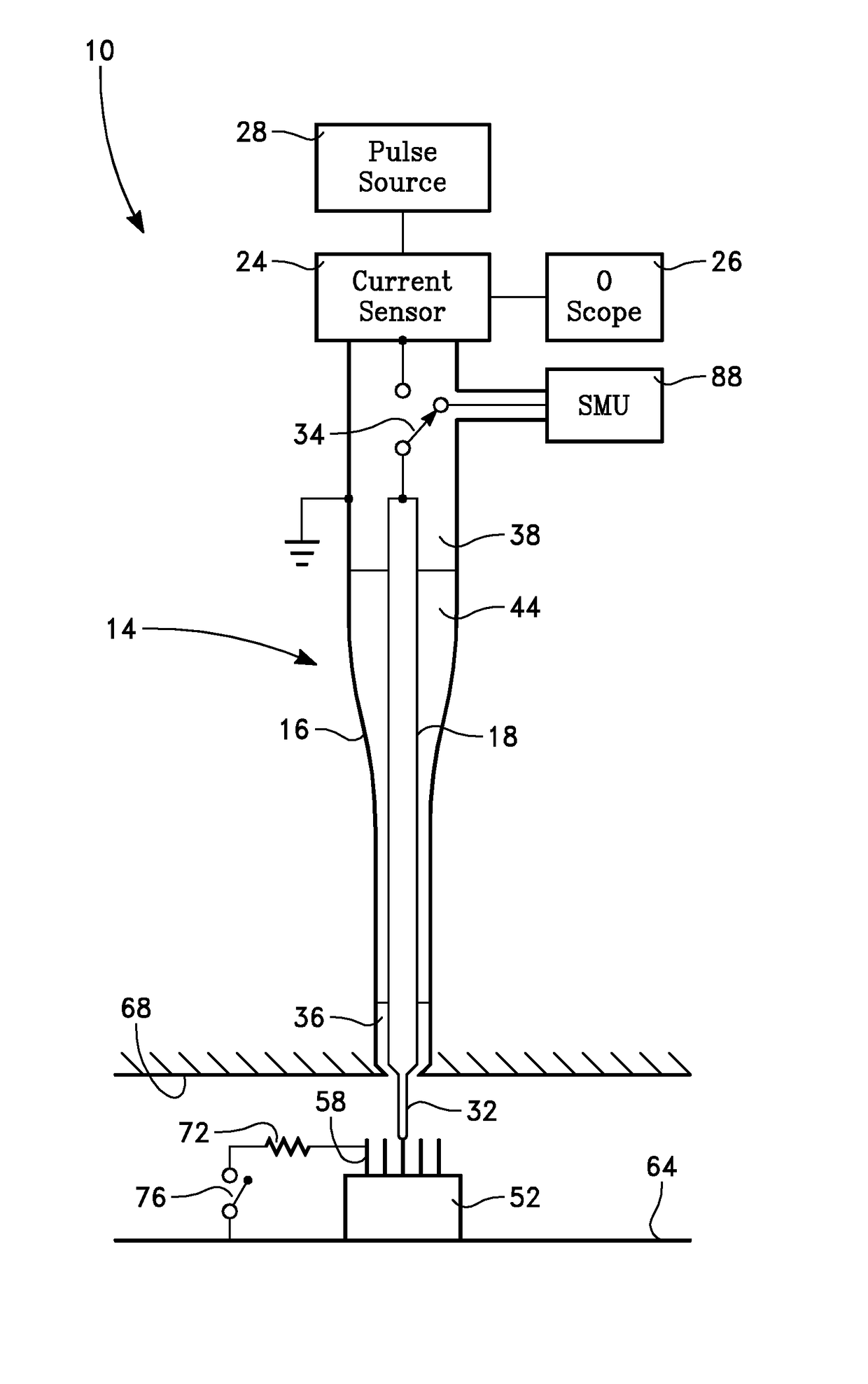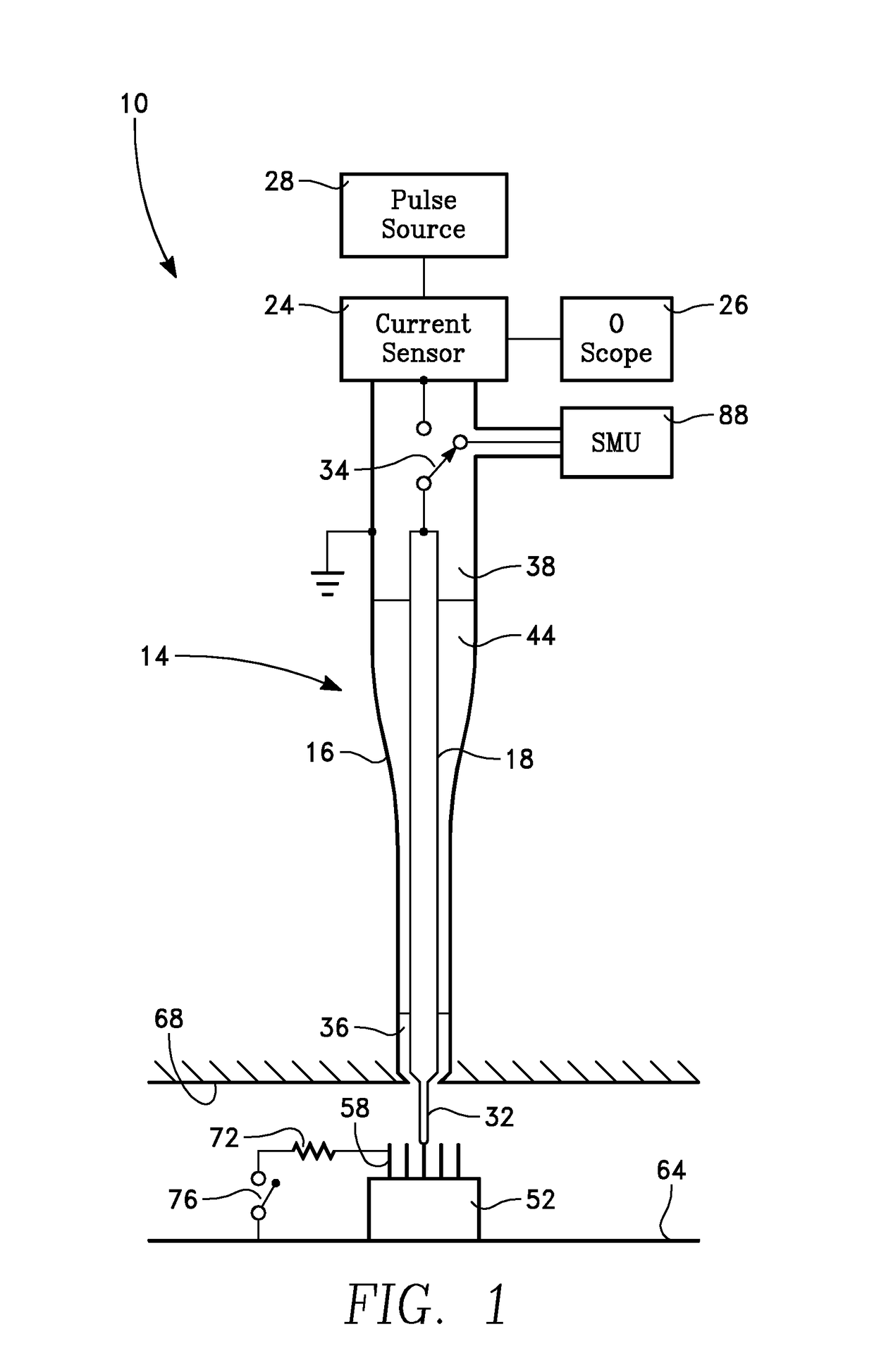Controlled impedance charged device tester
a technology of impedance charge and device, which is applied in the direction of measuring devices, dielectric strength testing, instruments, etc., can solve the problems of affecting the measurement of discharge current, affecting the test accuracy, and the inability of the protection circuit of the silicon esd protection circuit to turn on sufficiently fast, etc., to achieve the effect of facilitating construction and minimizing reflection
- Summary
- Abstract
- Description
- Claims
- Application Information
AI Technical Summary
Benefits of technology
Problems solved by technology
Method used
Image
Examples
Embodiment Construction
[0027]Reference is now made to the drawings wherein like structures refer to like parts throughout.
[0028]In FIG. 1, a controlled impedance Charged Device Model (CDM) tester 10 includes a transmission line impedance transformer 14 having an outer conductor 16 and an inner conductor 18. The impedance transformer 14 extends between a 50-ohm high speed coaxial switch (leakage measurement switch) 34 used to connect a DUT 52 to a test pulse source 28. Its DC continuity to the DUT 52 allows a Source Measurement Unit (SMU) 88 to apply a defined test voltage to the DUT lead after each test pulse and measure its DUT leakage current. Silicon DUT failure is identified when the leakage current increases above a limit. When the switch 34 connects the DUT to the pulse source 28 and current sensor 24, the test pulse can be applied to the DUT 52. The current sensor 24 allows the incident waveform to the DUT 52 and the reflected waveform from the DUT 52 to be monitored on an oscilloscope 26.
[0029]The...
PUM
 Login to View More
Login to View More Abstract
Description
Claims
Application Information
 Login to View More
Login to View More - R&D
- Intellectual Property
- Life Sciences
- Materials
- Tech Scout
- Unparalleled Data Quality
- Higher Quality Content
- 60% Fewer Hallucinations
Browse by: Latest US Patents, China's latest patents, Technical Efficacy Thesaurus, Application Domain, Technology Topic, Popular Technical Reports.
© 2025 PatSnap. All rights reserved.Legal|Privacy policy|Modern Slavery Act Transparency Statement|Sitemap|About US| Contact US: help@patsnap.com



